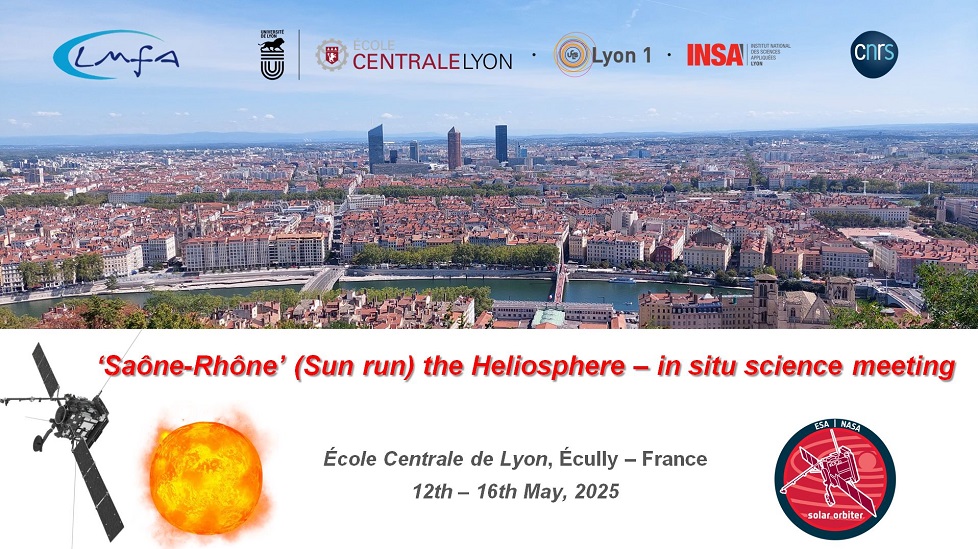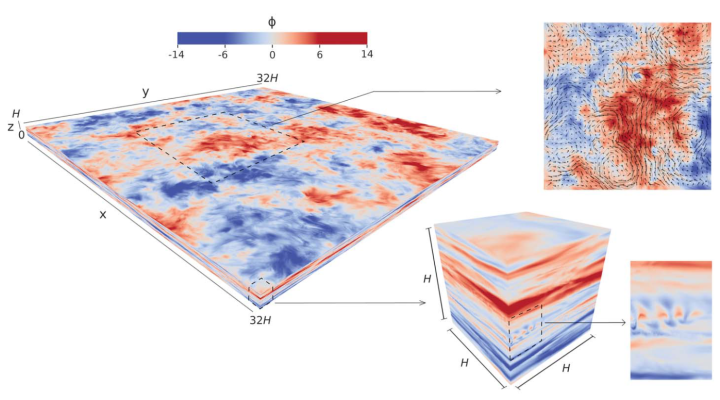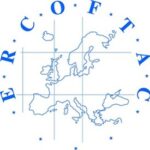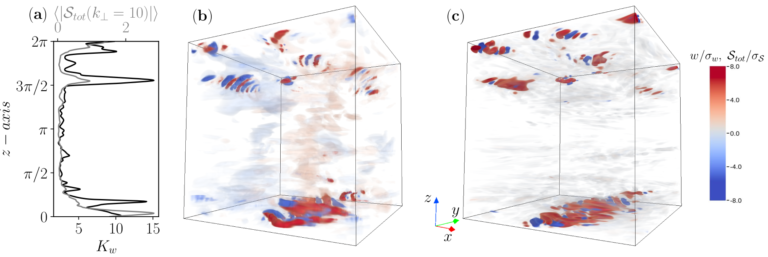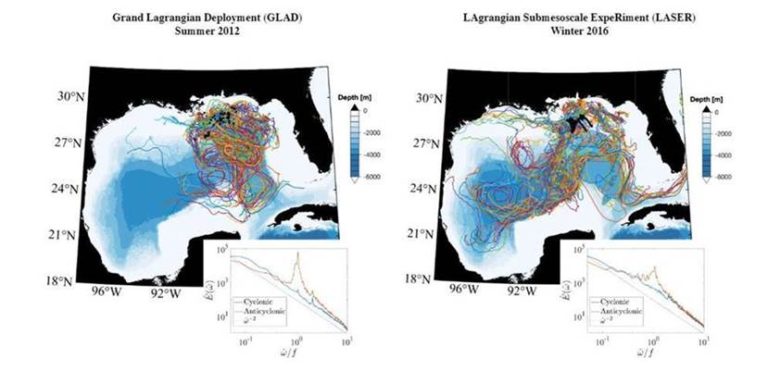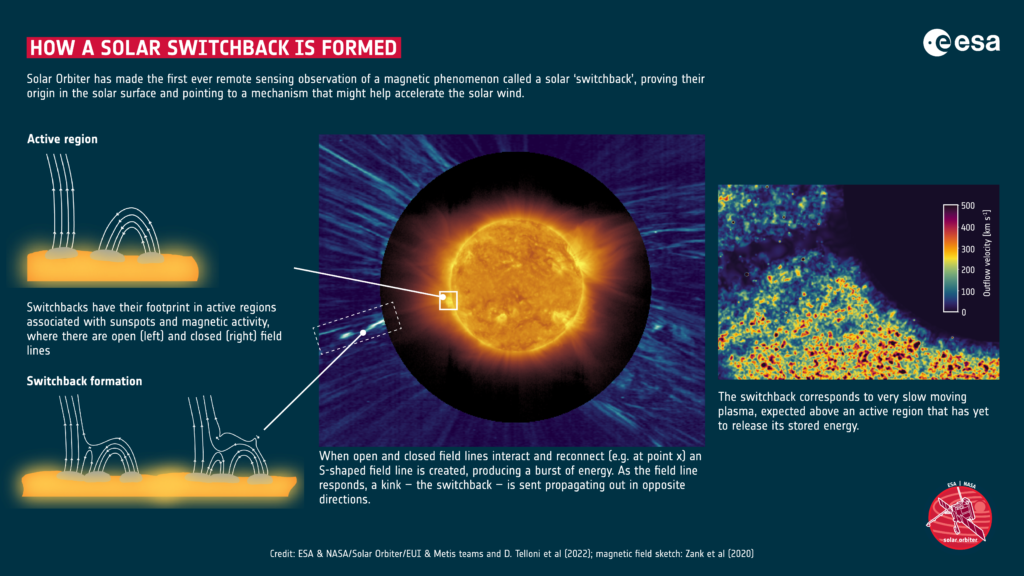Author: fferaco
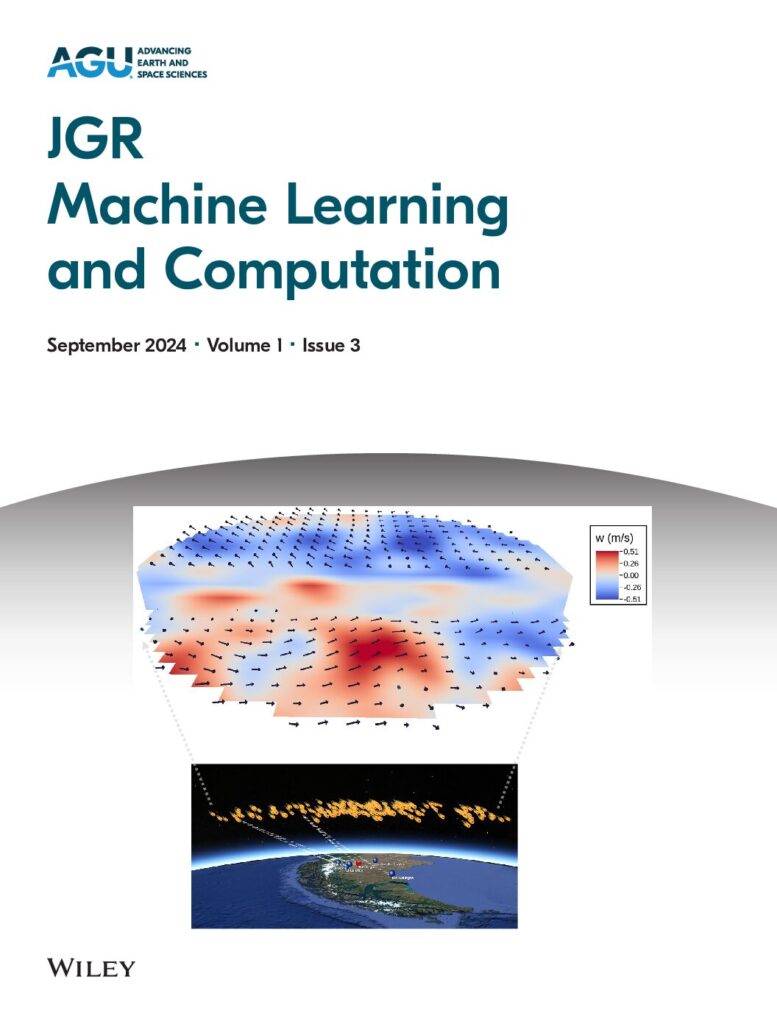
Article by R. Marino and F. Feraco on the cover page of JGR : Machine Learning and Computation Vol. 1 (3)
Article by R. Marino and F. Feraco on the cover page of JGR (Machine Learning and Computation) Vol. 1 (3)
Read more: @JGR: Machine Learning and Computation
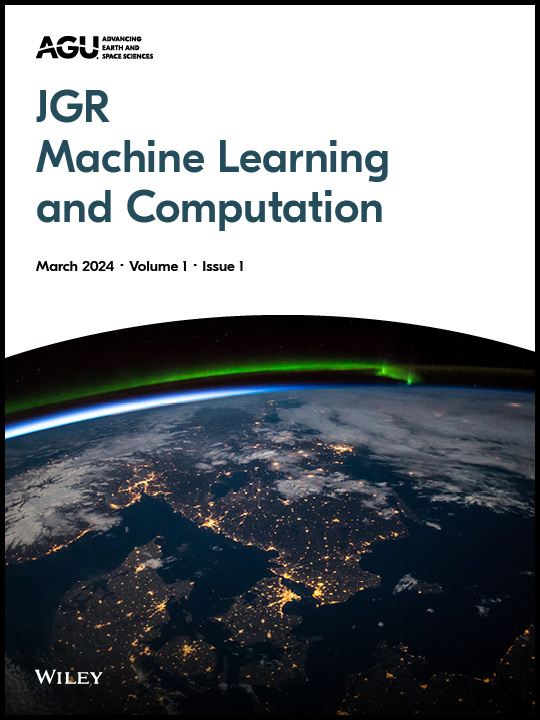
New Article on JGR: Machine Learning and Computations Vol. 1 (3) – (08/2024)
New Publication on JGR (Machine Learning and Computation) Vol. 1 (3): Augmented four-dimensional Mesosphere and Lower Thermosphere wind field reconstruction via the Physics-Informed Machine Learning approach HYPER
J.M. Urco, F. Feraco, J.L. Chau, R. Marino
The mesosphere and lower thermosphere (MLT) is a fluid framework whose multiscale dynamics is determined by a superposition of non-linear processes and by the interplay of gravity waves and turbulent motions. A thorough comprehension of this atmospheric region requires substantial observational infrastructure, needed to resolve and disentangle its complex dynamics. State-of-the-art observational methods struggle to accurately capture mesoscale dynamics due to the inherent difficulty to perform observations at MLT altitudes. A majority of the observational methods rely on assumptions such as homogeneity, smoothness of the prognostic fields, or zero vertical wind velocities, which may not hold in the upper atmosphere at the mesoscales. In this study, we introduce a novel machine learning-based approach HYPER (HYdrodynamic Point-wise Environment Reconstructor), designed to characterize MLT dynamics. HYPER utilizes a physics-informed neural network to project sparse Doppler meteor detections into four-dimensional time-series arrays containing the Cartesian components of the velocity field. This method combines meteor radar observations with the physics prescribed by the Navier-Stokes equations. The validation of HYPER was conducted through a series of benchmarks on numerical data and the application of our algorithm on actual meteor radar observations, all of which yielded realistic approximations of the reconstructed physical fields. This innovative approach represents a significant step toward an accurate characterization of the MLT dynamics, overcoming the limitations of existing methods, and providing valuable insights into the behavior of this poorly accessible region of the atmosphere.
Read the full article: @JGR: Machine Learning and Computation
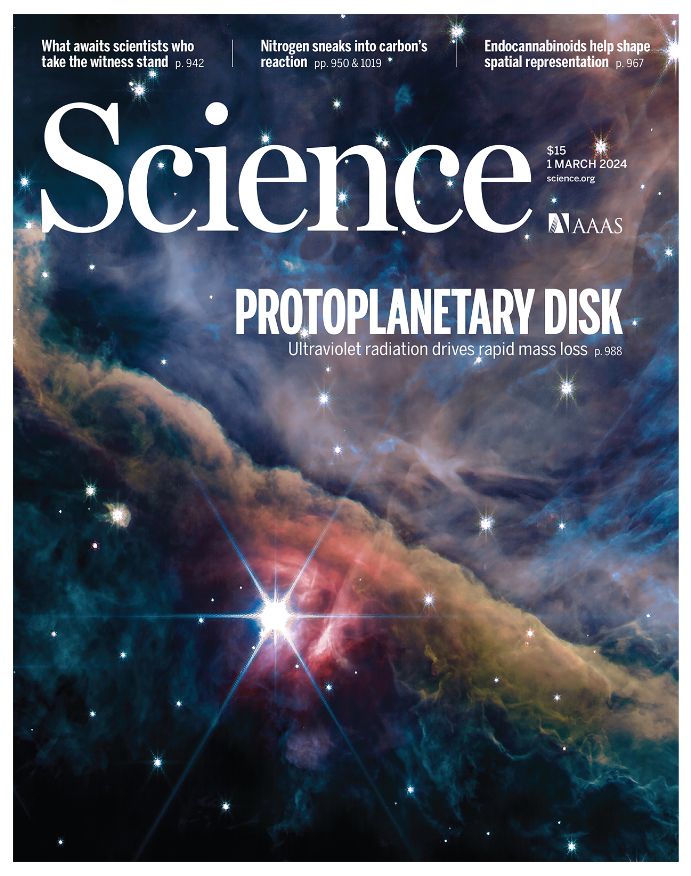
New Article on Science Vol. 383 (6686), p.1105-1109 (03/2024)
New Publication on Science, Vol. 383 (6686), p. 1005-1009: Large-scale self organization in dry turbulent atmospheres
A. Alexakis, R. Marino, P.D. Mininni, A. Van Kan, R. Foldes, F. Feraco
How turbulent convective fluctuations organize to form larger-scale structures in planetary atmospheres remains a question that eludes quantitative answers. The assumption that this process is the result of an inverse cascade was suggested half a century ago in two-dimensional fluids, but its applicability to atmospheric and oceanic flows remains heavily debated, hampering our understanding of the energy balance in planetary systems. We show using direct numerical simulations with spatial resolutions of 122882 × 384 points that rotating and stratified flows can support a bidirectional cascade of energy, in three dimensions, with a ratio of Rossby to Froude numbers comparable to that of Earth’s atmosphere. Our results establish that, in dry atmospheres, spontaneous order can arise through an inverse cascade to the largest spatial scales.
Read the full article: @Science
Visualization of density fluctuations ϕ and of the velocity field in the computational domain

Raffaele Marino is the founding deputy Editor-in-Chief of AGU New Journal – JGR: Machine Learning and Computation
Raffaele Marino is the founding deputy Editor-in-Chief of the AGU New Journal – JGR: Machine Learning and Computation
JGR: Machine Learning and Computation is an open access journal dedicated to the publication of research that develops and explores innovative data-driven and computational methodologies based on statistical analysis, machine learning, artificial intelligence, and mathematical models, with the aim of advancing knowledge in the domain of Earth and space sciences.
Editorial Board:
- Dr. Raffaele Marino, Laboratoire de Mécanique des Fluides et d’Acoustique (UMR 5509) CNRS, École Centrale de Lyon (France), Founding Deputy Editor-in-Chief
- Dr. Enrico Camporeale, Queen Mary University of London (UK) and CIRES, University of Colorado, Boulder (USA), Founding Editor-in-Chief
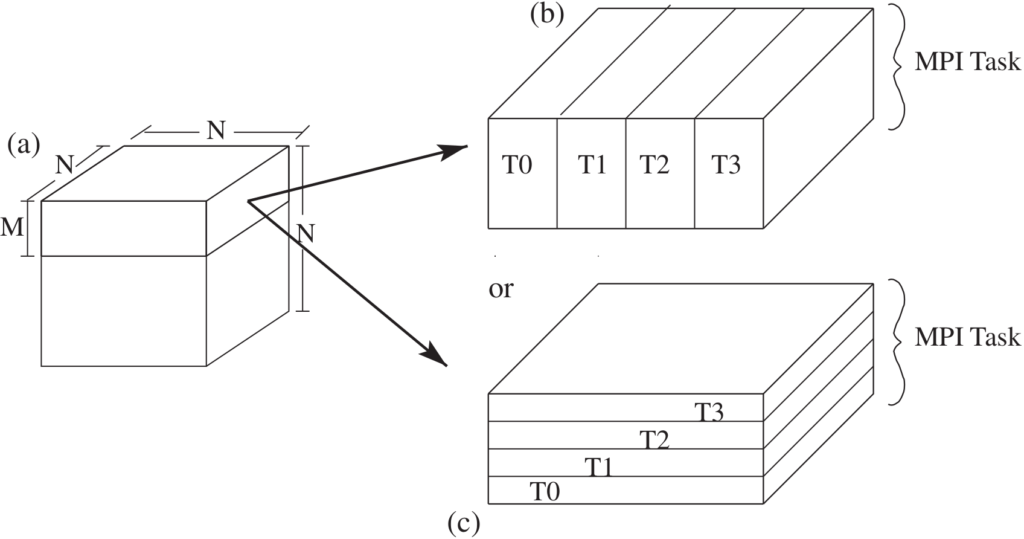
Dr. Fabio Feraco Lectures at Leibiniz Institute of Atmospheric Physics (IAP), Kühlungsborn 11/10 & 18/10/2023
Dr. Fabio Feraco Lectures at Leibiniz Institute of Atmospheric Physics (IAP), Kühlungsborn 11/10 & 18/10/2023
GHOST: A pseudo-spectral code for the study of geophysical turbulence
The Geophysical High-Order Suite for Turbulence (GHOST) is a pseudo-spectral code mainly developed by P. Mininni and D. Rosenberg. It can solve a variety of partial differential equations in two- and three-dimensional domains with periodic boundary condition and is parallelized using a hybrid MPI/OpenMP method. This seminar will provide the basic information about GHOST and show its capabilities through recent numerical simulations of turbulent flows.
Find out more @IAP
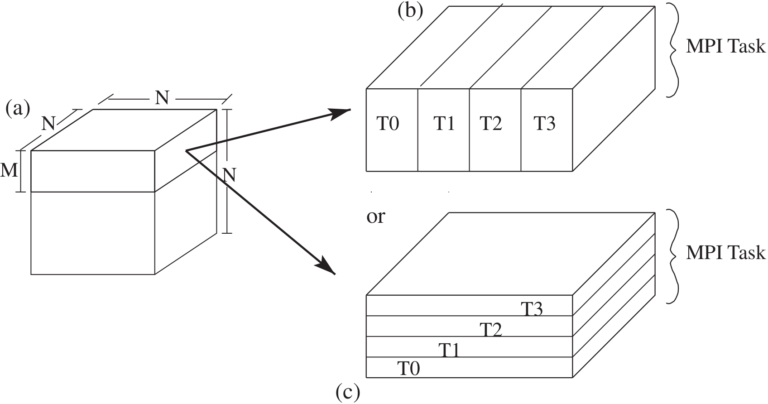

ERCOFTACT Workshop “Cross-Scale Energy Transfer in Space Plasmas”, 29 August – 1 September 2023, Lyon (FR)
ERCOFTACT Workshop: “Cross-Scale Energy Transfer in Space Plasmas”, 29 August – 1 September 2023
Find out more @ERCOFTAC

Raffaello Foldes PhD Thesis defense (31/03/2023)
Raffaello Foldes PhD thesis defense: Local Energy Transfer in Geophysical Fluids and Space Plasmas
Committee
– LEVEQUE Emmanuel, Research Director (CNRS, Emeritus) – Thesis Supervisor
– MARINO Raffaele, Research Director (CNRS) Thesis Supervisor
– PIETROPAOLO Ermanno, Professor (University of L’Aquila, Italy) – Thesis Supervisor
– BERRILLI Francesco, Full Professor (University of Rome – Tor Vergata, Italy) – Committee President
– LANOTTE Alessandra, Researcher (CNR/Nanotex, Italy) – Examiner
– LEHNER Thierry, Researcher (Observatory of Paris, France) – Examiner
Summary
Keywords: turbulence, waves, stratification, intermittency, geophysical flows, space plasmas, space-filtering
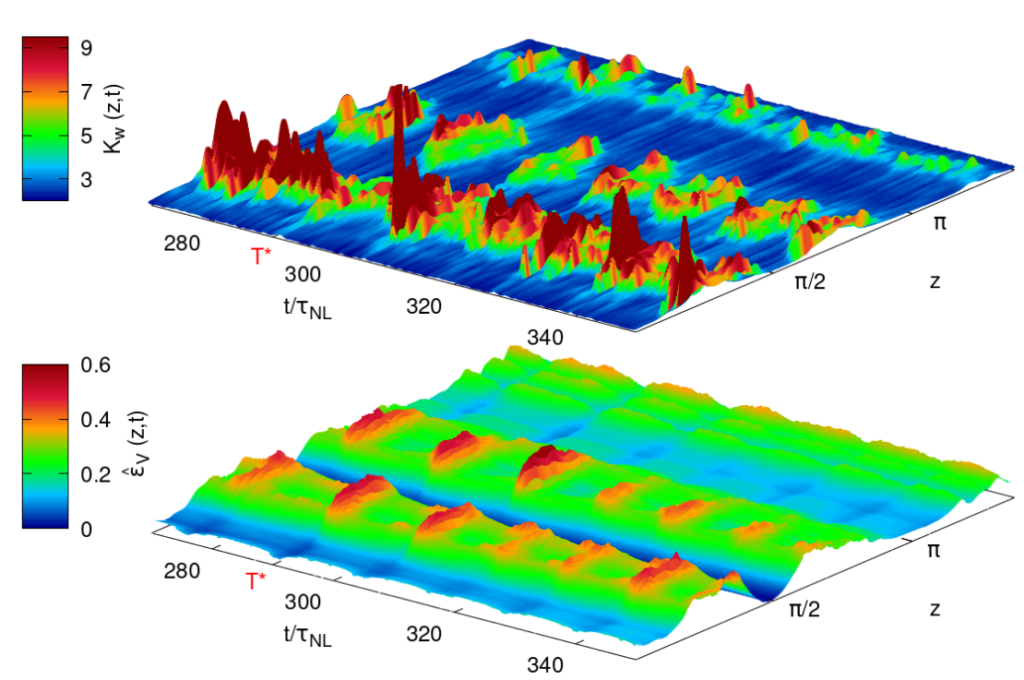
New Article on Science Advances Vol. 8 (41)
New Publication on Science Advances, Vol. 8 (41), p. 033801: Direct observational evidence of an oceanic dual kinetic energy cascade and its seasonality
D. Balwada, J.H Xie, R. Marino, F. Feraco
The ocean’s turbulent energy cycle has a paradox; large-scale eddies under the control of Earth’s rotation transfer kinetic energy (KE) to larger scales via an inverse cascade, while a transfer to smaller scales is needed for dissipation. It has been hypothesized, using simulations, that fronts, waves, and other turbulent structures can produce a forward cascade of KE toward dissipation scales. However, this forward cascade and its coexistence with the inverse cascade have never been observed. Here, we present the first evidence of a dual KE cascade in the ocean by analyzing in situ velocity measurements from surface drifters. Our results show that KE is injected at two dominant scales and transferred to both large and small scales, with the downscale flux dominating at scales smaller than ∼1 to 10 km. The cascade rates are modulated seasonally, with stronger KE injection and downscale transfer during winter.
Spatial distribution of the drifters

New Article on ApJ: “Observation of magnetic switchback in the solar corona”
Observation of magnetic switchbacks in solar corona
Article in press on “Astrophysical Journal Letters” ; https://arxiv.org/pdf/2206.03090.pdf
The solar wind is a continuous flow of supersonic plasma particles generated at the level of the Solar Corona – the Sun’s atmosphere – that expands radially, reaching the planets of the solar system and creating a large bubble of plasma that extends well beyond Pluto’s orbit, called the heliosphere. Together with this plasma flux, the Sun generates also a large scale magnetic field that pervades the heliosphere, carried within the solar wind. In 2019 NASA has launched the Parker Solar Probe – PSS, a mission designed to explore magnetic, electric and velocity fields in the solar wind, performing the closest approaches to Sun ever made by a spacecraft.
Soon after its launch, PSS has discovered the existence in the Solar Corona of abundant clusters of S-like structures called “switchbacks (see the animation below). These are essentially short-term ‘flips’ in the polarity of the magnetic field frozen in the outflowing solar wind, which may actually play a critical role in the creation and acceleration of the solar wind.
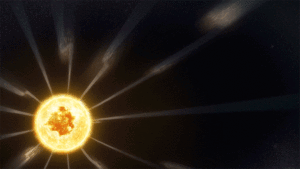
Parker Solar Probe observed switchbacks: traveling disturbances in the solar wind that caused the magnetic field
to bend back on itself. Credits: NASA’s Goddard Space Flight Center/Conceptual Image Lab/Adriana M. Gutierrez
While in the last couple of years, thanks to PPS, switchbacks have been widely observed near the Sun and the international community has worked on their characterizations, no theory has been put forward to date that explain their origin, as is reported in this recent articles on the NASA website:
https://www.nasa.gov/feature/goddard/2021/switchbacks-science-explaining-parker-solar-probe-s-magnetic-puzzle
The main question concerning this very peculiar magnetic structures, essential to explain the dynamics of the solar wind is: do the switchbacks have a solar origin or they form locally in the solar wind, as it expands into the interplanetary space?
This puzzle has finally been solved thanks to the a breakthrough discovery made by a team of scientists working on the ESA Solar Orbiter – SolO mission (launched in the February 2020), based on the first direct observation of a magnetic switchback in the Solar Corona, done with the METIS coronographer on board of SolO. In an article that will soon appear on “The Astrophysical Journal Letters (ApJ)”, Daniele Telloni, from the Italian National Institute for Astrophysics, co-investigator of the METIS, in collaboration with Raffaele Marino, CNRS scientist at the LMFA /Ecole Centrale de Lyon, Co-investigator of the plasma suite SWA on SolO, together with a team of worldwide recognized scientists from many countries, propose indeed a theory that would explain the origin of the magnetic switchbacks.
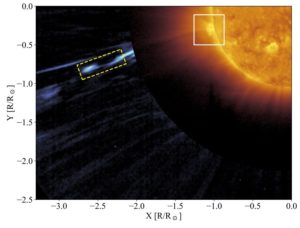
Composite of the Metis-observed total brightness image of the solar corona (blue) and of the ultraviolet emission image (yellow) provided by the Extreme Ultraviolet Imager from the Solar Orbiter vantage point on March 25, 2022 at 20:39 UT. The switchback (in the rectangular box) propagates through the Solar Corona, above an active region of the Sun (white box).
Telloni and Marino say: “the novelty of our work relies on presenting to the community the first observation of a magnetic switchback in the Solar Corona, together with a rigorous evidence based explanation of the SBs origin. As we explain with solid arguments in the manuscript just accepted in ApJ, we were able to interpret the generation of the switchbacks in space plasmas as the result of the interchange reconnection occurring between closed magnetic structures developing above active regions of the Sun and the open magnetic field lines emerging from neighbor of coronal holes, which suggest a common genesis for the magnetic switchbacks and the slow solar wind streams”.
The authors make the claim that the large scale S-like plasma structure observed in the Corona with the METIS instrument (shown in the figure above), in a region susceptible to contain the inversion of the local mean magnetic field, is indeed compatible with the existence of an underlying magnetic switchback. This is substantiated by a thorough spatio-temporal analysis performed using the METIS data, and by the outcome of (numerical and analytical) models of the coronal plasma and its magnetic field that have been ran in order to interpret the observations. According to Telloni and Marino, phenomenological evidence and quantitative assessments presented in their work provide critical elements leading to conclude that the observed plasma structure is supported by a large magnetic switchback in the Corona, occurring in a site where the probability for interchange reconnection to develop is high.
 Schematics of the interchange reconnection mechanism [from Zank et al. 2020, ApJL, 903,1] proposed to explain the origin of the magnetic switchbacks. a) a coronal loop (massive closed magnetic structure developing over the Sun’s surface) approaches a region with open magnetic field lines; b) the first magnetic field line “reconnect” asshown, producing a S-shaped open magnetic field line; c) the switchback is then pushed both upward and downward (as the arrows indicate in the sketch), while a new reconnection event starts on the subsequent neighbor field line, interacting with the same coronal loop.
Schematics of the interchange reconnection mechanism [from Zank et al. 2020, ApJL, 903,1] proposed to explain the origin of the magnetic switchbacks. a) a coronal loop (massive closed magnetic structure developing over the Sun’s surface) approaches a region with open magnetic field lines; b) the first magnetic field line “reconnect” asshown, producing a S-shaped open magnetic field line; c) the switchback is then pushed both upward and downward (as the arrows indicate in the sketch), while a new reconnection event starts on the subsequent neighbor field line, interacting with the same coronal loop.

